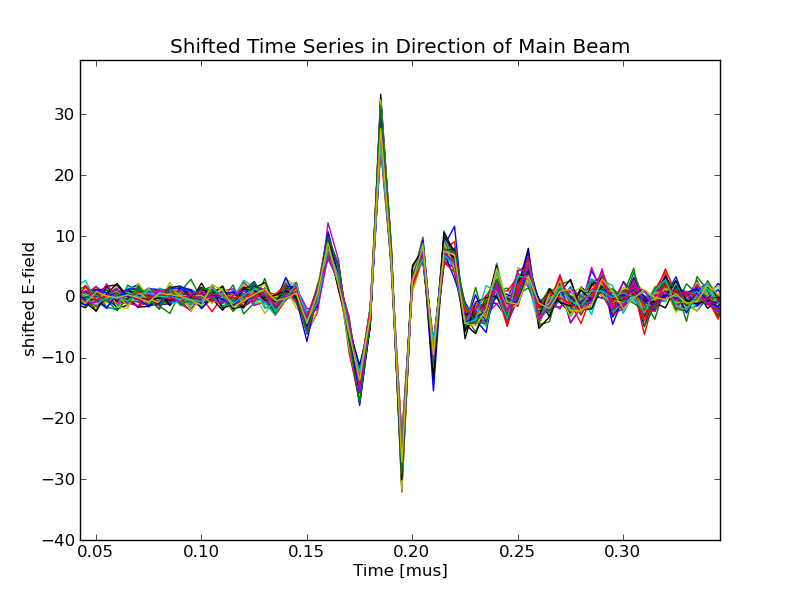At the moment the only Direct Storage mode that is supported is the write-out of time-series data stored in the Transient Buffer Boards.
Transient Buffer Boards
The Transient Buffer Boards (TBBs) contain the raw voltage signal of every dipole at the full time resolution and can be externally triggered to obtain this data. If triggered, the contents of the boards are frozen and sent to the CEP/OLAP for further processing. The integration time is 5 ns for the 200 MHz clock (6.25 ns for the 160 MHz clock, currently unsupported), and the maximum bandwidth is 100 MHz. The TBBs can dump at most 5 sec of data per event at full resolution in blocks of 5.12 µs.
TBB observations work currently with an external trigger provided by for example the particle detector LORA. Plans for the future include continuous triggering independently on pulses in LOFAR data itself. Such triggering improves with increased signal-to-noise ratio, thus a rather low noise level is needed. Transient RFI conditions are such that -until the self-triggering algorithm is improved to suppress these- most self-triggers are due to local RFI sources.
Data Products
Data is stored as Raw Voltages per station in HDF5 format, including some of the metadata. The software package to access the data and do some processing (eg. FFT, RFI mitigation, ..) with python scripts, PyCRTools, is available at CEP.
At the moment the automatic processing pipeline is not yet available on CEP for TBB data. There is a semi-automated Cosmic Ray pipeline in Nijmegen (~20s per event per station). For processing VHECR events using this pipeline one should contact the CRKSP group.
Performance Parameters
Currently for LORA triggered dumps, 2ms of data of all available core stations are written per TBB. The Table summarises the resources used for such a TBB dump.
Apart from the overhead time, which is nearly a fixed number, the numbers scale linearly with dumptime.
| Mode | Sampling Time | Data Rate | Data Volume | Data send rate to CEP | Overhead Time | Processing |
| (ns) | (MB/ms per station) | (GB/24 stations per
2ms) |
(GB/60s per station) | (s) | ||
| timeseries | 5 | 38.4 | 1.8 | 1 | 200 | not available at CEP |
The typical data size is 190 MB per station (for a core station) and two polarizations for 5 ms of read-out. The data size depends on the number of antennae used.
The maximum amount of data than can be dumped accounts for 5 seconds. For a 1.28 seconds (with the current default time resolution of 5 ns for cosmic ray observations). It takes 40 minutes to write a full second of TBB on the storage nodes (with forthcoming improvements this may be reduced to 8 minutes). The data send rate can be improved by a factor 6 by increasing the number of data paths (however, this will result in an higher data load which has not been tested well in piggy back mode).
A full dump of 5 seconds of data for one RCU is about 2 GB. A full dump of one 48 antenna station therefore adds up to approximately 200 GB.
Characteristic Observation

For a typical TBB observation, Figure 1 shows the raw voltages of all antennas of one polarisation of 1 station, as recorded in the TBB, when a cosmic ray (7*10^17 eV) was detected. The trigger to dump these data came from the LORA particle detector.
The data is (phase) shifted in time to correct for delays between the signals of the different dipoles.
Figure 2 shows the different arrival times for the same antennas.
